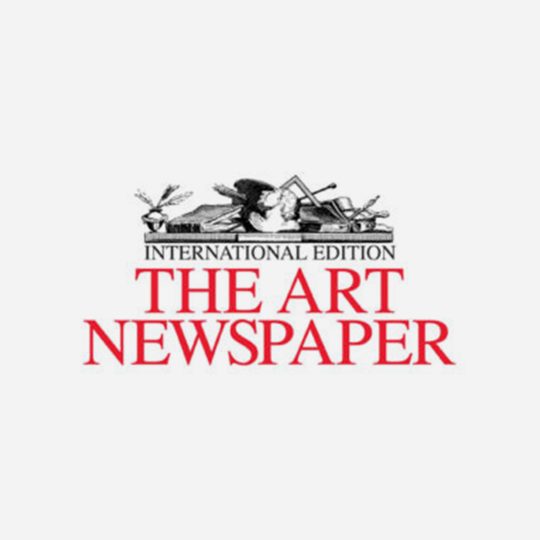
The Art Newspaper
2014
Garreth Harris, Anny Shaw, « A market boom, but only for some », The Art Newspaper, 18 mars 2014 :
« For the exhibitors at the 27th Tefaf Maastricht (14-23 March), a fair with its roots in Old Masters and antiques, the findings of Clare McAndrew’s annual report on the market as a whole—produced to coincide with the fair—were less encouraging than the headline figures suggest.
McAndrew finds that, as a whole, the fine art and antiques market is almost back to the boom levels of 2007. In 2013, sales totalled €47.4bn, up 8% on the previous year; in 2007, the total was €48bn. But, she finds, Modern and contemporary art accounted for 75% of the value of the fine art market (which does not include antiques) leaving many of Tefaf’s exhibitors in the minority.
There were some questions about how meaningful such aggregated data can be on the art market (see below), and McAndrew acknowledged: “The market is not one homogenous entity; some sectors are booming while others are lagging behind”.
The differences are stark, if not particularly surprising to art market observers. According to her data, the post-war and contemporary market is certainly in rude health (it grew by 11% last year), but the stratospheric prices achieved for around a dozen modern and contemporary artists are skewing the overall picture. McAndrew’s report says that the market’s 2013 gain was driven by a rise in value, not volume.
The market for Old Masters (a broad range, defined by McAndrew as artists born between 1275 and 1850 and also including Chinese artists from the same period) contracted by 7% in value in 2013, the second year of negative growth, bringing sales to just over €1bn.
Nevertheless, dealers at Tefaf insist that the Old Master market is also holding up at the high end. “At the top of the market, nothing has really changed,” says the Zurich-based Old Masters dealer David Koetser, noting, however, the difference in price levels between a blue-chip Old Master and a post-war work. “You can get a Rubens for £3m to £4m, [but] you need to add a zero to that for a [Francis] Bacon,” he says. By the second day of the fair, the gallery had sold five out of 35 works by artists including Pieter Claesz and Otto Marseus van Schrieck.
Sales of Old Masters have been mainly to European and US buyers. Despite a charm offensive by Tefaf to establish links with China in recent years, including an unsuccessful attempt to open a fair in Beijing in 2014 in partnership with Sotheby’s, dealers at the fair say that Chinese collectors are largely absent. However, a Hong Kong media tycoon, who preferred to remain anonymous, bought two pieces at the Parisian gallery Didier Aaron & Cie: an 18th-century bust by Claude-François Attiret and a painting by Jean-Baptiste Regnault, around 1788 (prices were undisclosed). Bruno Desmarest, a director at the gallery, says that collectors from Hong Kong are more inclined to buy European Old Masters because of the “shared cultural heritage with Europe”.
Antiques dealers tell a similar story to their Old Master counterparts. Prices at the top of the antiques market “never really moved”, says Marella Rossi Mosseri, a director of Aveline gallery in Paris, which shares a stand with the French dealer Christophe de Quénetain. The picture is different lower down. “Now you can only sell the very best pieces. The middle market is struggling,” says De Quénetain.
McAndrew’s report reveals that some antiques dealers in the US are “struggling more” or “simply managing to maintain a stable level of sales”. She says that the market for antiques, together with decorative arts and collectibles, grew by “roughly 2%” in 2013. Surprisingly, given that 43% of dealers at Tefaf specialise in antiques (119 out of 274 galleries), McAndrew’s report glosses over this part of the market. However, the economist says she hopes to analyse the sector more closely next year, including providing a breakdown by genre, including furniture, decorations, couture, jewellery and textiles.
Many dealers were reluctant to confirm sales and prices from Tefaf because of complex VAT laws in Holland, which require dealers to pay 21% tax on deals completed at the fair. Nevertheless, the Munich- and London-based dealer Bernheimer-Colnaghi reported the sale of a small early 19th-century self-portrait by Paulin-Jean-Baptiste Guérin, with an asking price of €310,000, and a 17th-century Madonna and Child by Bernardo Strozzi, priced at €760,000.
Number crunching
There were some grumbles this year about the methodology of McAndrew’s report, which—unlike most other market analyses—includes data from art dealers (which is not public) as well as published auction house results.
The information from dealers—whom McAndrew estimates to account for around 53% of the global market—comes from an anonymous survey of around 5,500 dealers from the US, Europe, Asia, Africa and South America. This represents only a small fraction (less than 2%) of what she estimates as 295,000 art dealers worldwide in 2013.
The challenges of collating meaningful art market data are hardly new to the art market and McAndrew says: « It is a highly opaque market and dealers are very private, despite most of them realising that this sort of benchmarking is actually really useful to the market. » But, she says, « the 2% of dealers we survey would come close to representing half the value of the market. »